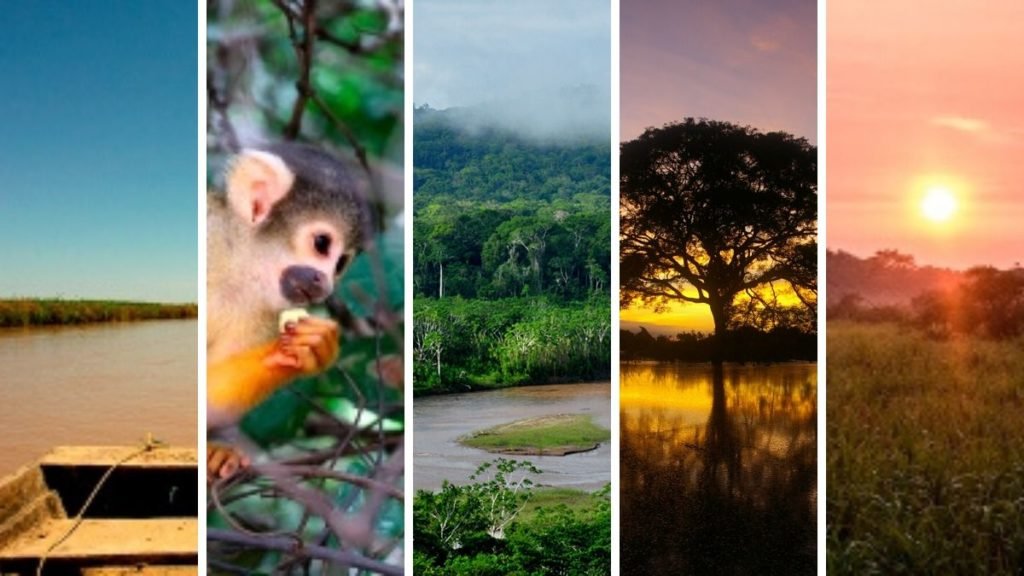
The Bolivian Amazon Region (RABo), known as the “Lowlands” region, has an area that varies between 714,493 and 724,000 km2, which corresponds to between 65.4 and 75% of the country’s total territory.
Panda Department – Amazonas Bolivia
This Amazonian region is made up of five departments, of which two are completely Amazonian: Panda and Beni. The other departments of La Paz, Cochabamba and Santa Cruz, are partially in the Amazonian region.
Beni Department – Amazonas Bolivia
Discovering the Bolivian Amazon
The Bolivian Amazon is categorized by two zones based on very different ecosystems:

The Pampas area is characterized by its wetland savannahs. This area is less wooded but has a wealth of fauna and fascinating vegetation.
In the second zone are the jungles with their endemic vegetation, high temperatures, and great biodiversity. This area is the real Amazon jungle.
Amazon-Bolivia Routes
The town of Rurrenabaque is the starting point for trips to the Bolivian Amazon. It is easy to sign up for tours, and they are much cheaper than if booked in La Paz.

Rurrenabaque has become the Bolivian Amazon’s main gateway to both the pampas and the jungle, and there are many tourist places of the Bolivian Amazon.There are different access points to the Bolivian Amazon, but Rurrenabaque, in the department of Beni, is the best. Rurrenabaque has agencies for excursions as well as a variety of places to spend the night.
October 24, 2019
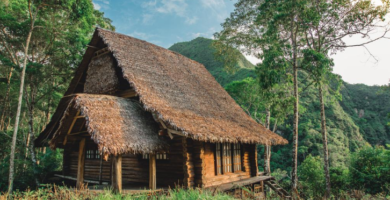
Hotels in the Bolivian Amazon Rainforest: Top 10
Travel to the Amazon
There are also other entry points to the Amazon region of Bolivia such as the city of Cobija which has an airport.
Amazon River Bolivia
Several airlines travel to the Amazon-Bolivia such as Tam Bolivia, Ecojet Bolivia, and Amaszonas. Check ticket prices and choose the one that best suits your budget.Other destinations are Guayaramerín or Trinidad. The latter has its own tourist attractions as well as a wide range of water activities on the Mamoré River (a large tributary of the Amazon River).

Wealth in the Bolivian Amazon
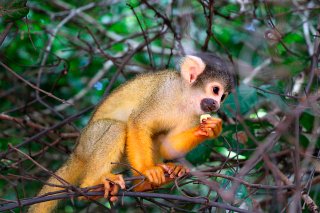
The Bolivian Amazon ranks seventh in the world for biodiversity with more than 1,300 species of birds; 220 species of reptiles; and about 100 amphibians. More than 700 species of fish have been identified; and there are between 15,000 to 20,000 species of vascular plants.
To add to this wealth of biological diversity, 643 animal species have been recorded in the Amazon region: 326 birds; 185 fish; 67 mammals; 37 amphibians; and 28 reptiles.
There is also the cultural wealth of the indigenous peoples. Currently 24 indigenous peoples live in this region: Araonas, Ayoreos, Baures, Cavineños, Cayubabas, Canichanas, Chacobos, Chiquitanos, Ese Ejjas, Guarayos, Guarasugwe , Itonamas, Joaquinians, Lecos, Machineris, Maropas, Moré, Mosetenes, Movimas, Moxeños, Nahuas, Pacahuaras, Sirionós, Tacanas, Toromonas, Tsimane, Yaminahuas, Yukis, and Yuracares.
Amazon-Bolivia the best option!
For travelers on a low budget, Rurrenabaque is a great option. It is growing in popularity. It has a large number of cheap tours, but above all, it is close to Yacuma Pampas and the Madidi National Park.
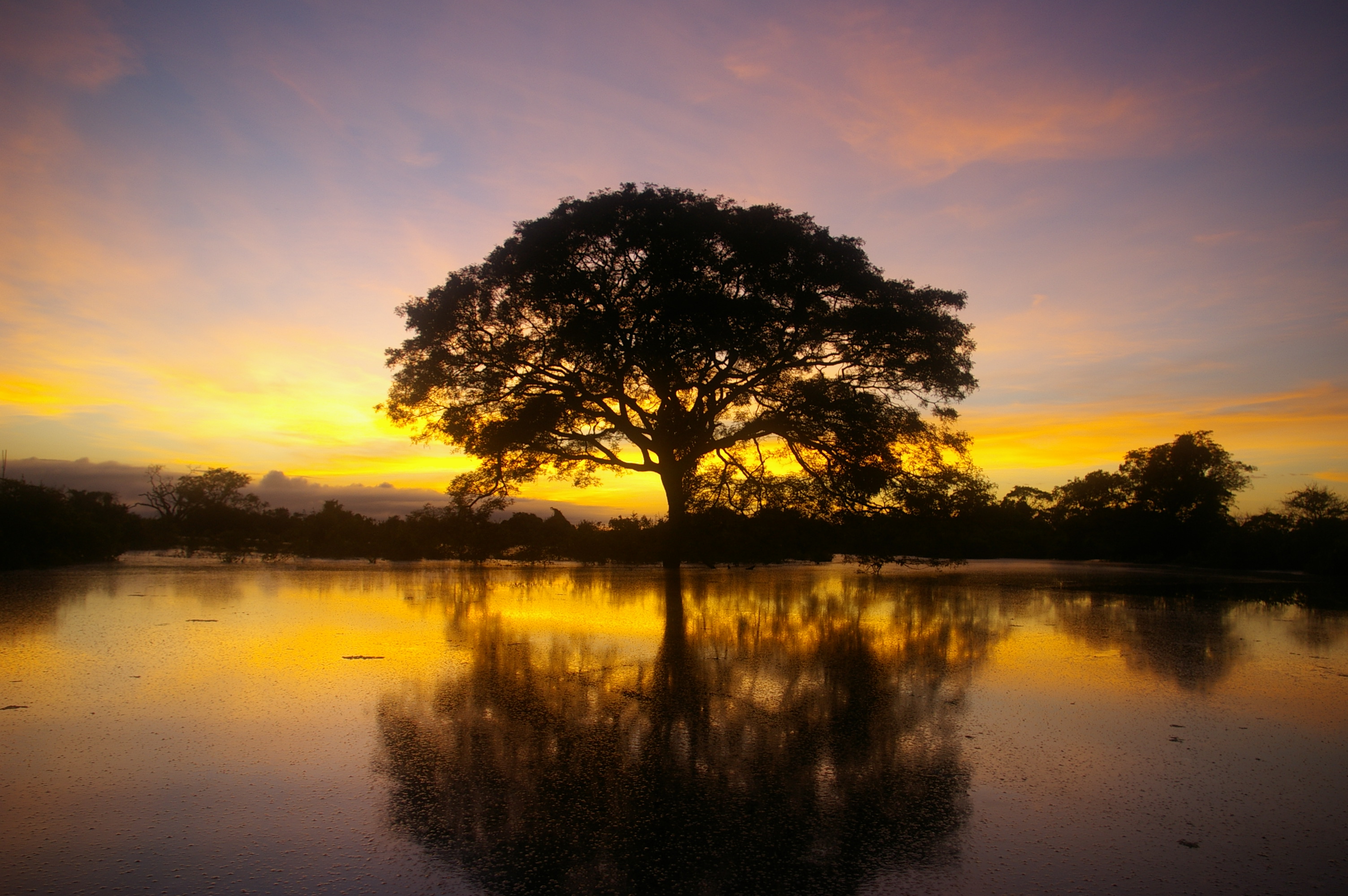
Madidi National Park has been declared by the National Geographic magazine as one of the most biodiverse areas on the planet. It is one of the top-20 places of great tourist interest worldwide.
The main attraction is the amazing quantity and variety of fauna combined with the enormous probability of seeing it.
In many tourist places you can easily see everything from pink Amazon dolphins to black and white alligators, capybaras, and all kinds of birds and monkeys.
October 24, 2019

10 tourist attractions of the Bolivian Amazon Rainforest
Tips when traveling to the Amazon
- You can get to Rurrenabaque from La Paz by bus. It takes around 20 hours. You can take a 35-minute flight with Amaszonas or with the slightly cheaper option, TAM.
- The best time to visit the Bolivian Amazon is the dry season from May to October when there is more wildlife near the rivers and fewer mosquitoes.
- In Rurrenabaque there are no ATMs, so you must carry enough cash.
- Try to bring what is necessary such a raincoat, boots or other types of waterproof footwear, repellent, and sunscreen. Remember that the Amazon is a humid area.
- Wear cotton clothing and avoid dark colors because they attract mosquitoes.
- Before traveling do not forget to get a yellow fever vaccine. You must be vaccinated ten days prior to your trip for it to have the necessary effect. The vaccine is completely free at the airport and bus terminal.
- If you want to be a little safer, you can also get vaccinated against dengue, malaria, and tetanus.
- Remember to bring the vaccination certificate as they may ask for it at the airport.
- Bring pain relievers to soothe a headache or possible discomfort from an insect bite.
- Take B-complex vitamins before and during the trip because this will help you avoid possible stings.
- Don’t forget to bring a good camera for the beautiful sunsets. It is recommended that you carry airtight bags to store electronic devices.
Visiting the Amazon jungle whether from Bolivia, Brazil, Colombia, Ecuador, Peru or Venezuela is an exciting experience that connects us with nature at its best. It teaches us that life coexists in balance.
Other Amazon countries
October 5, 2019
Ecuadorian Amazon Rainforest
October 5, 2019

The Colombian Amazon Rainforest: majestic refuge of nature and culture
October 5, 2019

Brazilian Amazon Rainforest
October 5, 2019
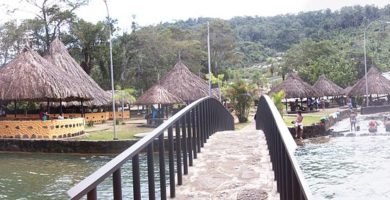
Venezuelan Amazon Rainforest
October 5, 2019
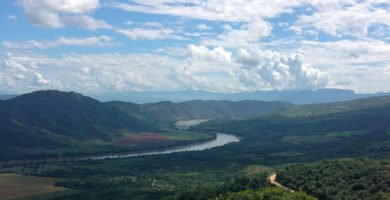
Peruvian Amazon Rainforest
This post is also available in:
![]() Español (Spanish)
Español (Spanish)
